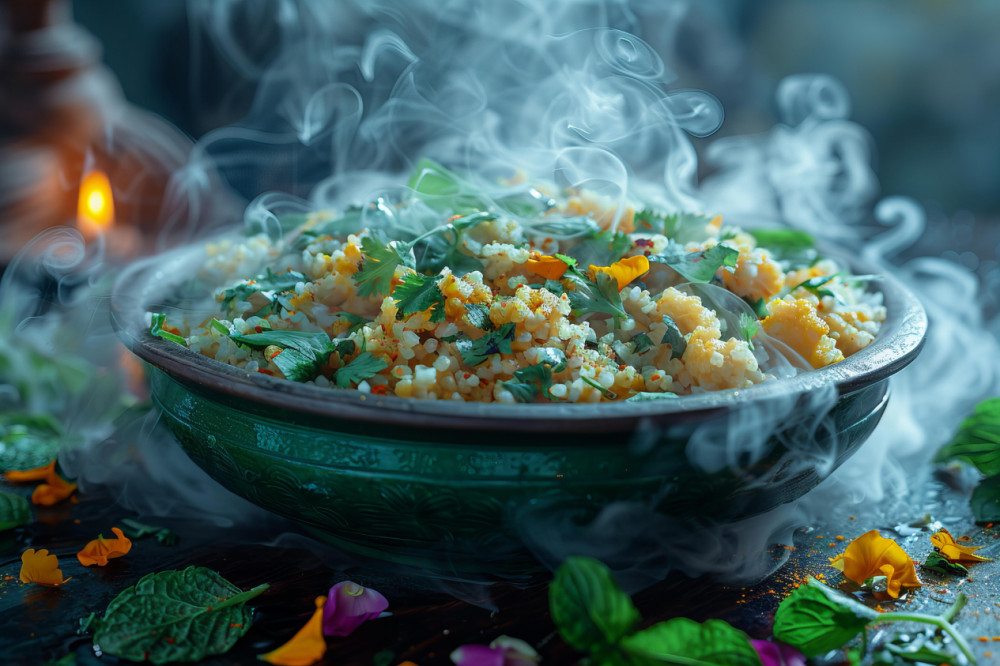
Baisakhi – the harvest festival that brings in all the food!

If you, like us, have grown up watching Bollywood films of the 90’s you are more than acquainted with the harvest festival of Baisakhi. Colourful clothes, people singing and dancing, lots of food and fun! However, what is the fanfare all about? Here’s what it is!
Baisakhi is the Punjabi New Year that marks the onset of the month of Vaisakh. The celebrations are cued to mark the harvest festival. It is a time, when the season-long hard work and toil of the farmer finally pays off. It is a time to make merry because there is food in the world. This is the time when all the crop sown during winter Rabi) is now ripe to be harvested. It also, of course, marks a new season of sowing, readying the fields for the incoming monsoons which will drench the soil with renewed fertility and strength.
For the uninitiated, Baisakhi is also celebrated along side other harvest festivals of the country like Bohag Bihu in Assam and Vishu in Kerala. (Find the importance behind Vishu and the celebrations of Bihu here.
Here are some Baisakhi special foods that you should simply not miss!
Kadhi Pakodey
Yogurt is a natural and very popular coolant. Be it any region – from the North to the South, yogurt or curd makes its way through all Indian dishes. A spicy, tangy kadhi made with sliced onions is the Punjabi way of creating a meal out of the humble yet versatile curds. Made better with plump, pillowy besan pakoras dunked into it, this kadhi is best enjoyed with some jeera rice or plain steamed rice even. It makes for a filling, hearty meal on a hot summer afternoon – which is usually the case on Baisakhi.
Sweet Rice
Deliciously sweet and rich yet palatable, this yellow saffron rice is made by adding sugar and buts to your regular boiled rice. A very imperative quality to this is that each grain of this rice dish is separate, making every grain equally flavourful, equally sweet and of course properly ghee laden. Not specially light – this dish can be a little heavy if you live in a hot region, so eat with caution.
Kesar Phirni
Fragrant strands of saffron adorn the sweet, thick, creamy dish that phirni is. Made with soaked, ground whole rice, this dish calls for milk and slivers of nuts – making it a delicious coolant for the summers. It is a highly festive dish and can be eaten even on other happy occasions. This is not just easy to make but also very light on the tummy and makes for the perfect dessert during sweltering summers.
Lassi
No Punjabi fanfare is complete without a tall glass of chilled lassi. Creamy full fat yogurt and raw cane sugar is used to create this simple yet mindblowing concoction. Have it plain or flavour it with cardamom, kewra, rose or mangoes, a lassi is always welcome no matter where you are or what time it is. Best during Baisakhi, the lassi is served to merrymakers who sing and dance in the summer heat to welcome the onset of Vaisakh.
Kada Prasad
Just like lassi is important to every Punjabi occasion, kada prasad or the atte ka halwa is served at Gurudwaras as an auspicious mark of celebration. Made with simple pantry ingredients like wholewheat flour, ghee, sugar/jaggery and water, this dish makes for a wholesome, soul-fulfilling meal in itself.
Chhole
This spicy chickpea dish is a staple in Punjab and is sold extensively across India as a delicacy. Made in a simmering onion tomato gravy, these chhole are served with either puris or the more festive bhaturas, made of leavened dough.
Kala Chana Masala
Yet another quintessentially Punjabi dish is the kala chana or black gram, eaten across India. This is usually made by tossing soaked, cooked chana in an oily spice mix and garnishing it with lots of coriander and hot fluffy puris.
Rajma
Red kidney beans are the cryptonite of every Punjabi mom – each household has a member who makes the best Rajma and there can be no other way of cooking it. Made in a pressure cooked gravy, these are ladled over hot steaming rice and eaten with hands. With curd and onions for accompaniments, you really don’t need much – except several hours of sleep after stuffing your face with what is the best possible way of cooking beans!
Maa Ki Daal
Speaking of Punjabi moms, the maa ki daal or daal makhni is a dish lovingly conjured up by Punjabi moms. It is served with rice or paratha and goes well as a dish in itself, without the need for a vegetable to accompany it. Black urad daal is washed, picked, soaked and cooked and simmered in a rich tomato-cream gravy until mushy and creamy. It is said that in the olden days, Punjab had sanjha chullas or a community oven where the village would gather to cook their bread. After the fire was put down, women would place the ma ki daal to cook in the cooling oven, overnight.
There is no one dish that can define a festival, however, there are ample varieties of food that one can savour to enjoy a festival in India.
Related Blogs

Sea Vegetables for Plant-Based Cooking: Superfoods You Must Try
74 Views

Broccoli Superfood Benefits: Why Dietitians Recommend It in 2025
82 Views

September Superfoods: How to Cook With Millets, Moringa & Drumstick Leaves
80 Views

National Nutrition Week 2025 : Incorporating Nutritious Indian Superfoods
103 Views

More Herbs, Less Salt Day: Indian Herb-Infused Recipes for Wellness
122 Views